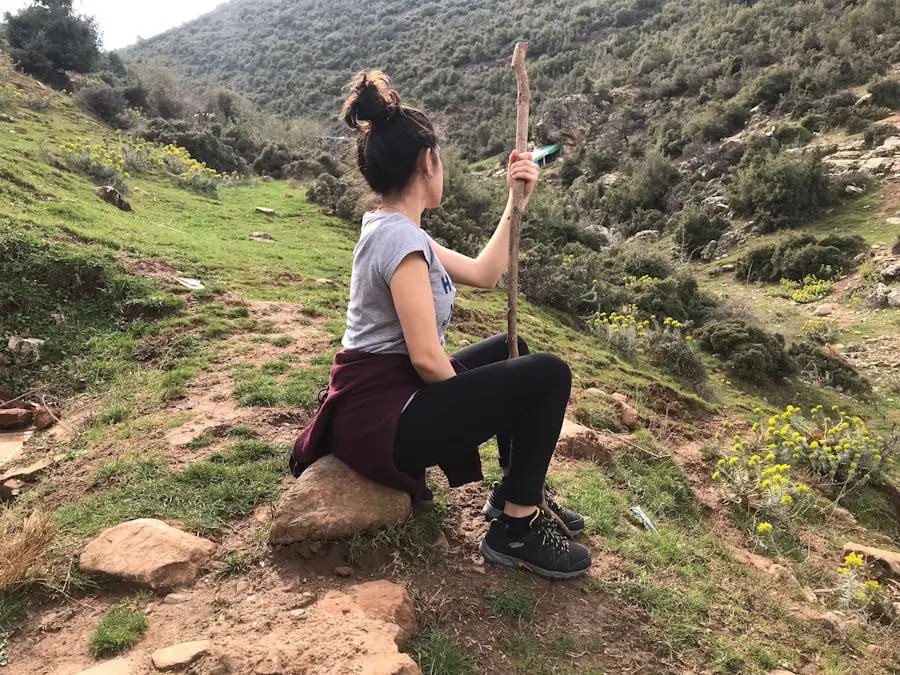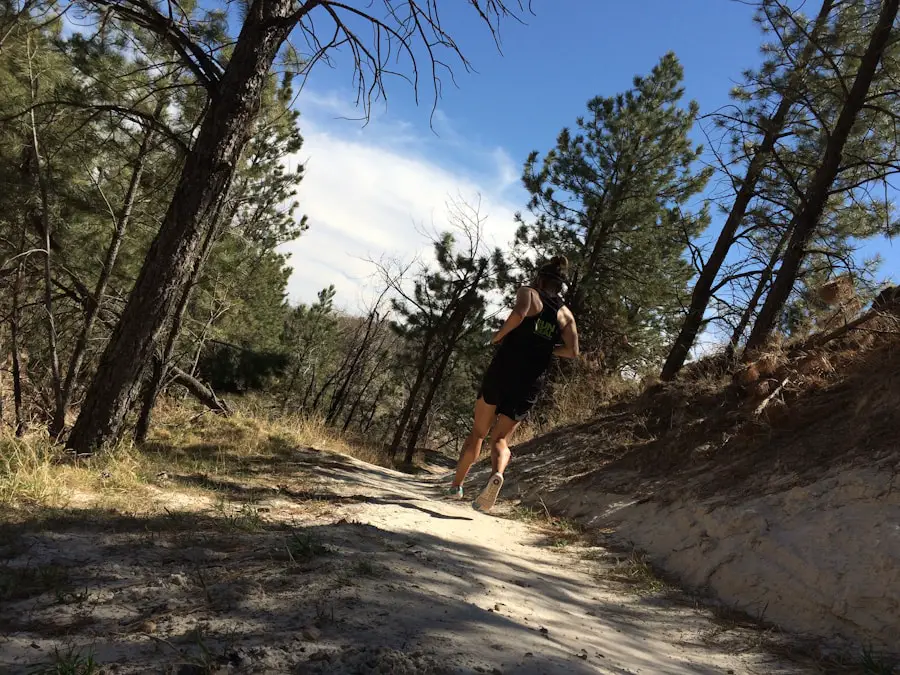Hiking is a multifaceted physical activity that engages various muscle groups and cardiovascular systems, making it an effective way to burn calories. The fundamental principle behind calorie burning during any exercise is the concept of energy expenditure, which is the amount of energy, measured in calories, that the body uses to perform a specific activity. When hiking, the body requires energy to support muscle contractions, maintain core temperature, and facilitate metabolic processes.
The intensity of the hike, the terrain, and the individual’s body weight all play significant roles in determining how many calories are burned. Research indicates that hiking can burn anywhere from 430 to 550 calories per hour for an average person weighing around 155 pounds, depending on the trail’s difficulty and elevation gain. The more challenging the hike—characterized by steep inclines, rugged terrain, or prolonged durations—the higher the calorie expenditure.
This is due to the increased effort required to navigate obstacles and maintain balance, which engages more muscle fibers and elevates heart rate. Additionally, hiking in varied environments, such as mountainous regions or forests, can further enhance calorie burn due to the need for greater physical exertion and mental focus.
Key Takeaways
- Hiking can burn between 400-550 calories per hour, depending on factors such as weight, speed, and terrain.
- Factors that affect calorie burn while hiking include incline, weight of the backpack, and the individual’s fitness level.
- Hiking can burn more calories than walking or yoga, but less than running or cycling.
- To maximize calorie burn while hiking, incorporate interval training, carry a weighted backpack, and choose challenging terrain.
- Proper nutrition is essential for hiking and calorie burn, including a balance of carbohydrates, protein, and healthy fats.
Factors that Affect Calorie Burn While Hiking
Body Weight: A Significant Factor
Heavier individuals tend to burn more calories than lighter individuals while performing the same activity at the same intensity. This is because a greater mass requires more energy to move. For instance, a person weighing 200 pounds may burn approximately 600 calories per hour hiking on a moderate trail, while someone weighing 130 pounds might only burn around 400 calories in the same timeframe.
Terrain and Elevation: Crucial Roles in Calorie Expenditure
The terrain and elevation also play crucial roles in calorie expenditure. Hiking on flat, well-maintained trails will generally result in lower calorie burn compared to steep, rocky paths that require more effort and muscle engagement. The incline of a trail can significantly increase heart rate and energy expenditure; studies have shown that hiking uphill can increase calorie burn by as much as 50% compared to hiking on level ground.
Weather Conditions: An Additional Factor
Weather conditions, such as temperature and humidity, can also affect calorie burn. Hiking in hot weather may lead to increased sweating and energy expenditure as the body works harder to cool itself down.
Comparing Hiking to Other Forms of Exercise for Calorie Burn

When comparing hiking to other forms of exercise, it becomes evident that it offers unique benefits in terms of calorie burning. For example, running typically burns more calories per minute than hiking due to its higher intensity level; a person running at a pace of 6 miles per hour can burn around 660 calories per hour. However, running may not be accessible or enjoyable for everyone, particularly those with joint issues or those who prefer a more leisurely pace.
Hiking provides a low-impact alternative that still allows for significant calorie burning while being easier on the joints. Cycling is another popular form of exercise that can be compared to hiking in terms of calorie expenditure. A moderate cycling pace can burn approximately 500-600 calories per hour, depending on factors such as speed and resistance.
However, cycling lacks the full-body engagement that hiking offers; while cycling primarily works the lower body, hiking activates core muscles and upper body strength when navigating uneven terrain or using trekking poles. Furthermore, hiking often takes place in natural settings that can enhance mental well-being and enjoyment, making it a more holistic exercise option for many individuals. (Source: Harvard Health Publishing)
How to Maximize Calorie Burn While Hiking
| Factors | Calories Burned per Hour |
|---|---|
| Body Weight | Approximately 430-550 calories for a 160-pound person |
| Intensity of Hike | Up to 500-700 calories for a moderate to vigorous hike |
| Terrain | Varies, but rough terrain can increase calorie burn |
| Pack Weight | Additional 100-200 calories for carrying a heavy pack |
| Speed | Increased speed can lead to higher calorie burn |
To maximize calorie burn while hiking, individuals can implement several strategies that enhance both intensity and duration. One effective method is to choose trails with varying elevations and challenging terrains. Opting for hikes that include steep ascents or rugged paths will naturally increase heart rate and energy expenditure.
Additionally, incorporating interval training into hikes—alternating between periods of brisk walking or jogging and slower-paced walking—can further elevate calorie burn. Another way to increase calorie expenditure is by adding weight through a backpack or weighted vest. Carrying extra weight forces the body to work harder, thereby increasing energy expenditure.
Research suggests that carrying an additional 10% of body weight can lead to a significant increase in calories burned during physical activity. Moreover, using trekking poles not only helps with balance but also engages the upper body muscles, contributing to higher overall calorie burn.
The Importance of Proper Nutrition for Hiking and Calorie Burn
Nutrition plays a pivotal role in optimizing performance and maximizing calorie burn during hikes. Consuming a balanced diet rich in carbohydrates, proteins, and healthy fats provides the necessary fuel for sustained energy levels during physical activity. Carbohydrates are particularly important as they serve as the primary energy source for high-intensity activities like hiking.
Foods such as whole grains, fruits, and vegetables should be included in pre-hike meals to ensure adequate glycogen stores. During hikes, it is essential to maintain hydration and replenish lost electrolytes through water and electrolyte-rich snacks. Dehydration can lead to decreased performance and increased fatigue, ultimately hindering calorie burn potential.
Snacks such as trail mix containing nuts and dried fruits provide both hydration and energy-dense nutrients that can sustain hikers throughout their journey. Post-hike nutrition is equally important; consuming protein-rich foods aids in muscle recovery and helps replenish glycogen stores depleted during the hike.
Tips for Tracking Calorie Burn During Hiking

Tracking calorie burn during hikes can be beneficial for those looking to monitor their fitness progress or manage weight effectively. One of the most straightforward methods is using fitness trackers or smartwatches equipped with heart rate monitors and GPS capabilities. These devices can provide real-time data on heart rate, distance traveled, elevation gain, and estimated calories burned based on individual metrics such as age, weight, and fitness level.
Mobile applications designed for outdoor activities also offer valuable insights into calorie expenditure while hiking. Many apps allow users to log their hikes, track routes, and analyze performance metrics over time. Additionally, some apps provide community features where hikers can share their experiences and tips for optimizing calorie burn.
For those who prefer a more traditional approach, maintaining a detailed logbook of hikes—including distance, duration, terrain type, and perceived exertion—can help individuals estimate their calorie burn over time.
The Psychological Benefits of Hiking for Calorie Burn
Beyond its physical benefits, hiking offers significant psychological advantages that contribute to overall well-being and motivation for maintaining an active lifestyle. Engaging with nature has been shown to reduce stress levels and improve mood through exposure to natural light and fresh air. The act of walking in serene environments can lead to increased feelings of happiness and relaxation, which may encourage individuals to pursue hiking more frequently as a means of exercise.
Moreover, hiking can foster a sense of accomplishment and boost self-esteem as individuals conquer challenging trails or reach scenic viewpoints. This sense of achievement can motivate hikers to set new goals related to fitness or outdoor exploration, further enhancing their commitment to regular physical activity. The social aspect of hiking—whether through group hikes or community events—can also provide emotional support and camaraderie among participants, reinforcing positive behaviors related to health and fitness.
Hiking as an Effective Way to Burn Calories
Hiking stands out as an effective way to burn calories while simultaneously offering numerous physical and psychological benefits. Its versatility allows individuals of varying fitness levels to engage in this activity while enjoying nature’s beauty. By understanding the science behind calorie burning during hikes and implementing strategies to maximize energy expenditure—such as selecting challenging trails or incorporating proper nutrition—individuals can enhance their overall fitness journey through this rewarding outdoor pursuit.
If you’re looking to stay active while traveling, hiking is a great way to burn calories and enjoy the outdoors. According to a recent study, hiking can burn up to 400-700 calories per hour, depending on the intensity of the hike and the individual’s weight. For more tips on staying active while traveling, check out this article on 5 Must-Have Portable Water Bottles for Your Spring 2025 Adventures.
FAQs
What is hiking?
Hiking is a form of outdoor physical activity that involves walking on trails or paths in natural environments such as forests, mountains, and parks.
Does hiking burn calories?
Yes, hiking is a great way to burn calories. The exact number of calories burned depends on factors such as the intensity of the hike, the terrain, and the individual’s weight and fitness level.
How many calories can you burn while hiking?
On average, a person can burn between 400-700 calories per hour while hiking, depending on the factors mentioned earlier.
What are the health benefits of hiking?
Hiking offers numerous health benefits, including improved cardiovascular fitness, muscle strength and endurance, stress reduction, and mental well-being. It also provides an opportunity for vitamin D exposure and connection with nature.
Is hiking suitable for all fitness levels?
Yes, hiking can be adapted to different fitness levels. There are trails available for beginners, intermediate hikers, and advanced hikers, allowing individuals to choose the level of challenge that suits them best.
What should I bring on a hike?
It is important to bring essentials such as water, snacks, appropriate footwear, a map or GPS device, sun protection, and weather-appropriate clothing. It’s also a good idea to let someone know your hiking plans and estimated return time.
